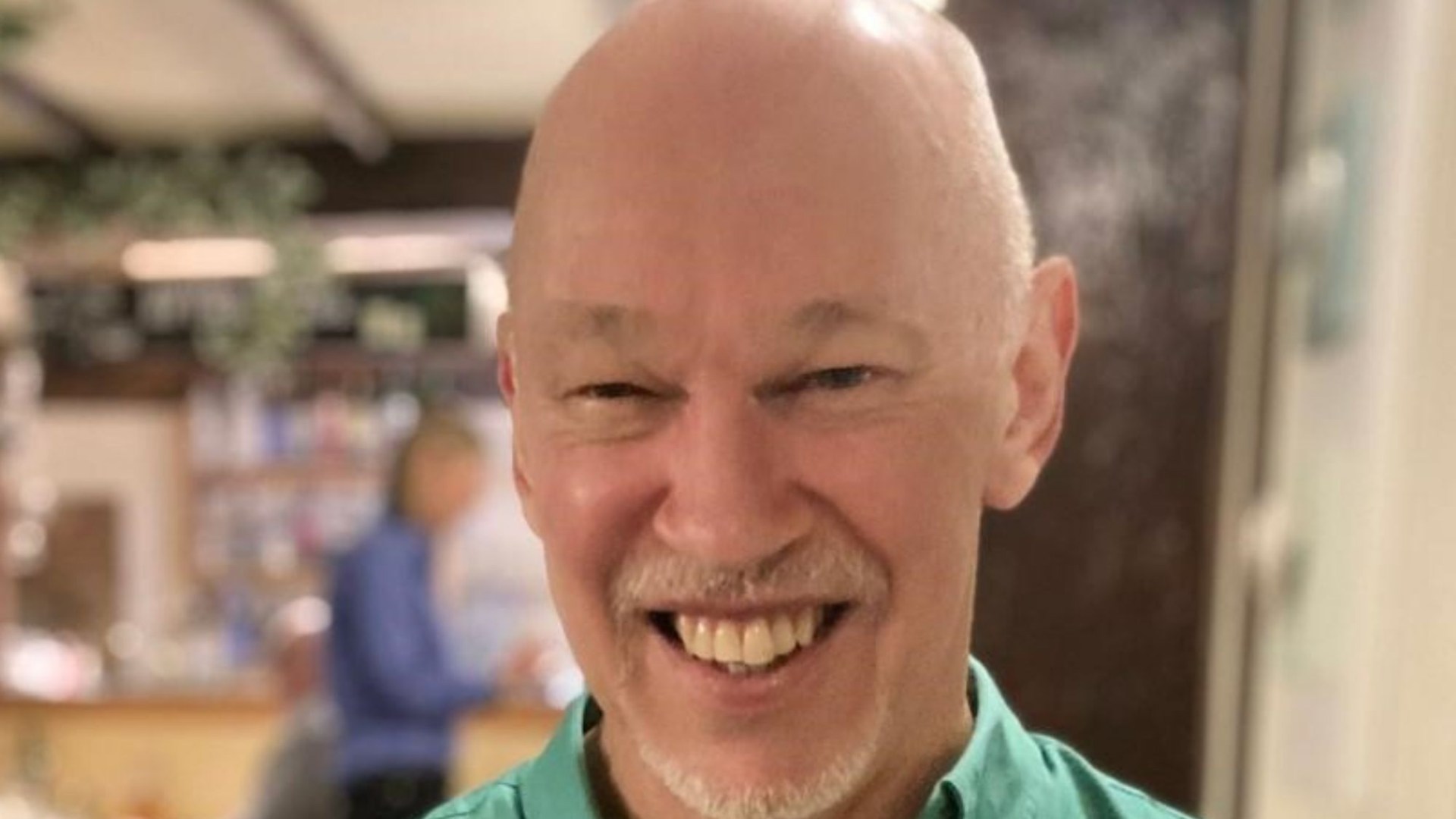A DAD tragically died after “grazing” his leg on a piece of wood.
Phillip Maile, was swimming in the sea in Turkey when he picked up an extremely rare flesh-eating bacteria that doctors were unable to stop from spreading despite amputating his leg twice.
8

8

8
The 65-year-old from Worthing, West Sussex, was diagnosed with a deadly skin infection called necrotising fasciitis while holidaying in Oludeniz, Turkey, with his wife, Vanessa, in September 2022.
His leg started quickly turning black and blue a few days after going swimming in the Mediterranean despite his wound being dressed in a waterproof bandage and being told that salt water would be “beneficial”.
The father-of-three was rushed to hospital on September 9 where, over the next five weeks, doctors attempted to prevent the infection from spreading.
Medics cleaned his wound and amputated his leg above the knee and then at the hip.
Read more on flesh eating bug
But despite their efforts, Phillip sadly passed away on October 13 2022.
His daughter Charlotte, 32, is calling on others to be more vigilant when it comes to their own pain.
“The second that you have a small cut or an open wound that is causing you more pain than it should be, bypass everything and get to the hospital because the chances are it will stop it from spreading and it can literally spread right in front of your eyes,” she explained.
Phillip and his wife Vanessa took a day trip to explore the Saklikent Gorge near the city of Fethiye while on holiday in Turkey in September 2022.
They stopped for lunch at the Yaka Park Fish Farm before making their way to a nearby waterfall where Phillip climbed a flight of wooden stairs to reach the viewing platform.
He had only taken a few steps when his foot suddenly went through one of the rotten planks up to his knee.
Fortunately, he was unharmed except for a small cut on his left leg.
“He got this little scratch which was tiny. It looked like a graze. That’s the best way to describe it,” said Charlotte.
A few days later, out of precaution, Phillip, who had type 2 diabetes, visited a pharmacy where his wound was dressed in a waterproof bandage.
Charlotte said her dad was told by the pharmacist he could continue swimming in the sea as the wound was only small and the salt water would be beneficial.

8

8

8
‘SEA WATER GOT IN’
Over the next few days, Phillip continued swimming but started complaining that his wound was causing him a lot of pain.
“Despite the waterproof dressing the seawater obviously got in, but we didn’t know this at the time,” said Charlotte.
“Every single person we spoke to at the hospital said that the infection came from the sea.”
Phillip’s wound became infected with a rare type of bacteria called Vibrio vulnificus, sometimes dubbed the flesh-eating bacteria, as it can trigger necrotising fasciitis, a severe infection where the flesh around an open wound dies.
Charlotte was on a work trip in Ireland when her stepmother, Vanessa, called to say that her father had been taken to the public hospital.
At first, doctors were unable to put their finger on why Phillip was in so much pain but there were signs that his condition was getting worse.
“His leg started to go blue and then black and you could almost see how quickly it was travelling up his leg,” said Charlotte.
On September 9, just 24 hours after receiving her stepmother’s call, Charlotte and her siblings, Sarah, 37, and Edward, 35, were told to board a plane to Turkey as their father was being “blue lighted” to the Antalya Lara Anadolu Hospital.
Her stepmum, Vanessa, had arranged for them all to stay in a serviced apartment seven and a half minutes’ walk away from the hospital.
“From that day on we would walk to and from the hospital twice a day where we would get an update from the doctors who were amazing,” said Charlotte.
Vanessa, Charlotte and her siblings, who had since been joined by Phillip’s younger brother, William, from Australia, were only able to see Phillip in pairs for a couple of minutes every day.
‘NEVER WALK AGAIN’
In a bid to halt Phillip’s infection from spreading doctors raced to clean and remove the dead or infected skin, a procedure known as debridement.
Unfortunately, the procedure failed and on September 14 Phillip was transferred to the intensive care unit after developing sepsis.
“It was on that day that we were pulled into a room to make a decision,” said Charlotte.
“They said, the only way we can attempt to try and stop this from spreading is to amputate.”
Later that evening, doctors amputated Phillip’s leg above the knee before he was placed on life support.
He suffered septic shock after the operation and had to be placed on dialysis to clean his blood, but there was a sliver of hope a few days later when Charlotte and her family returned to the hospital.
“They thought that had done it and we had a couple of days where we thought this is going in the right direction because even though he was intubated there was no necrotic smell,” said Charlotte.
But their hopes were dashed on September 20 when doctors removed Phillip’s bandages to find signs of necrosis and suggested amputating the rest of his leg.
“He basically went in for another operation to amputate his leg up to his hip bone which is the highest amputation you can do and meant that he would never walk again,” said Charlotte.
Again the operation failed to prevent the deadly bacteria from spreading and, after fighting for another three weeks, Phillip died on October 13, 2022.
What is necrotising fasciitis?
Necrotising fasciitis is a flesh-eating disease that happens if a wound gets infected.
It’s rare, and needs to be treated in hospital straight away.
The first signs of the illness are:
- Intense pain or loss of feeling near to a cut or wound – the pain may seem much worse than you would usually expect from a cut or wound
- Swelling of the skin around the affected area
- Flu-like symptoms, such as a high temperature, headache and tiredness
Later symptoms may include:
- Vomiting and diarrhoea
- Confusion
- Black, purple or grey blotches and blisters on the skin (these may be less obvious on black or brown skin)
You should go to A&E or call 999 if you have a cut which is more painful than expected, you have a wound and symptoms like a temperature or headache, you suddenly feel confused, or you have black, purple or grey blotches near a cut or wound.
Necrotising fasciitis gets worse quickly and can be fatal.
Treatments usually include antibiotics and surgery to remove the infected area.
Source: NHS
After losing their father, Charlotte’s sister, Sarah, contacted a charity called the Lee Spark NF Foundation which was established by Dee Cartledge, who lost her son to the same disease in 1999.
Through the organisation, they have met “inspiring people” including some who managed to survive the deadly disease, which Charlotte said has helped them feel less alone.
Charlotte plans on running the the Abingdon marathon on October 20 2024 to help raise money for the charity and has already raised more than £2,500 on GoFundMe.
“I have been completely blown away about how much support I’ve received for doing this,” she said.
“My truly, truly heartfelt thanks to absolutely every single person who has taken the time to first read the story, and then feel that they’re able to donate.
“Honestly, the foundation helped us in our darkest, darkest time where we thought we were entirely on our own.”

8

8




